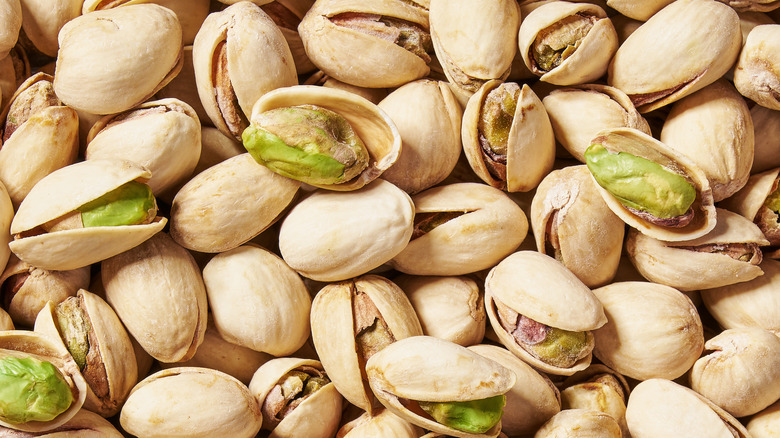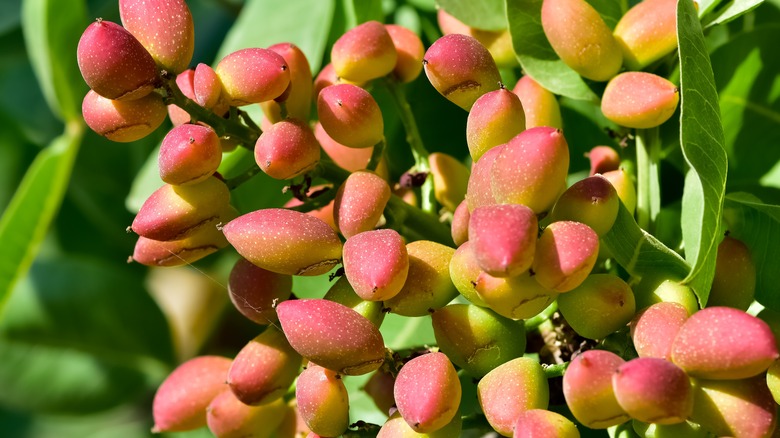The Scientific Reason Pistachios Aren't Technically Nuts
There's nothing quite like a good pistachio, and humanity's love of them is one of the few things we understand about our prehistoric ancestors.
For almost as long as there have been humans, we've been enjoying pistachios. Studies have found that even early neanderthals enjoyed pistachios along with other foraged foods. Your Central Valley reports that they've also been found to be absolutely loaded with antioxidants. Heart of the Desert claims that those antioxidants are also what gives pistachios their unique green hue. Livestrong adds that they have plenty of healthy fats as well, making them a nutritious snack for neanderthals and modern homo sapiens alike.
While we may most commonly think of pistachios as nuts, they technically belong to another food group, which brings them closer in line with mangoes and peaches than many people would expect. They aren't the only food posing as a nut though — there are plenty of others hiding out in this casually defined food category.
Pistachios are actually drupes
According to Food Print, while pistachios are commonly referred to as nuts, they are in fact something else known as a drupe. Britannica notes that a drupe is a fleshy fruit that usually contains a single seed inside. Common examples of drupes include stone fruits like peaches, plums, and cherries. Fruits that consist of several individual fruits clumped together like raspberries or blackberries are also considered a grouping of smaller drupes.
Pistachios don't seem to resemble any of these other drupes very much, but it's only because of the way we're exposed to them. Pistachios are actually just the inner seed of a pink and yellow fleshy tree fruit. This outer fruit is discarded when it's harvested, and its delicious inner seed is roasted and sold inside its remaining shell instead. Think of it as cracking open a peach's pit to find something tasty inside.
Britannica adds that these types of nuts that are taken from the interior of a fruit are not considered traditional nuts, but they are instead called 'culinary nuts.'
The many different culinary nuts
Brittanica points out that 'true nuts' are those that consist of a small, woody fruit that doesn't need to split open to release its inner seed. Nuts in this category include acorns, chestnuts, and hazelnuts. Healthline adds that these true nuts are often not edible. Instead, they often have a tough, woody exterior that is difficult to consume in most cases.
It's unclear who first started to use the term 'culinary nut,' but it is typically used to refer to the many drupes and legumes (i.e. peanuts) that are commonly known as nuts. This way — in terms of botany — they still aren't considered nuts, but once you get into a kitchen and start talking about adding nuts to a recipe, people have an idea of what you're talking about.
Live Science adds that this is similar to the way that tomatoes can be considered both fruits and vegetables. They will always be considered fruit from the perspective of a botanist because of how they grow on a plant. To a chef though, they will always be a vegetable due to how they are used in most dishes. So, while pistachios, walnuts, pecans, and cashews are all technically the seeds of drupes, we use them in recipes as if they were nuts.


